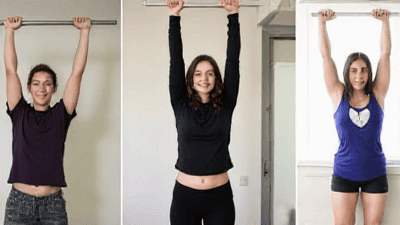
As we move into 2025, the world of fitness continues to evolve at a rapid pace. With advancements in technology, changes in societal attitudes toward health, and a growing awareness of wellness, innovative workouts are emerging that cater to diverse preferences and needs.
The Rising Importance of Personalization in Fitness
One of the most significant trends in fitness over the past few years has been the move towards personalization. As fitness enthusiasts seek tailored workout experiences, the industry is responding with programs and technologies designed to meet individual needs.
Wearable Technology
Wearable fitness devices will become increasingly sophisticated by 2025. Beyond merely tracking steps and heart rate, these devices will offer personalized insights based on user data. For instance:
- Smartwatches: Equipped with advanced sensors, smartwatches will provide real-time feedback on various health metrics, including stress levels, sleep quality, and recovery rates, allowing users to optimize their workouts accordingly.
- Wearable ECG Monitors: These devices will monitor heart health and provide alerts for irregular heartbeats, enabling users to make informed decisions about their exercise regimens.
AI-Driven Fitness Apps
Artificial intelligence (AI) will play a crucial role in shaping personalized workout plans. Apps will analyze user data and preferences to create customized fitness plans and nutrition guidance. Features may include:
- Adaptive Training Programs: AI will adjust workout intensity and volume based on user progress, ensuring optimal performance and recovery.
- Nutrition Tracking: Users will receive personalized meal plans and recipes that align with their fitness goals, whether they aim to lose weight, gain muscle, or maintain overall wellness.
Hybrid Fitness Models
The pandemic accelerated the trend of hybrid fitness, blending in-person and virtual workouts. This model is likely to remain popular in 2025, offering flexibility for users.
Online Group Classes
Group fitness classes will continue to thrive online, allowing participants to enjoy the camaraderie of group workouts from the comfort of their homes. Expect to see advancements such as:
- Interactive Features: Live streaming with real-time feedback from instructors and virtual classes where participants can interact and motivate each other.
- Subscription Services: Fitness platforms that offer a range of classes, including yoga, strength training, and dance, for a monthly fee, making it accessible to a broader audience.
In-Person Community Events
While online classes are convenient, many people crave the social aspect of in-person workouts. Local fitness studios and gyms will offer community events, such as:
- Fitness Fest: These events will combine various workouts, wellness workshops, and nutrition seminars in a festival-like atmosphere, attracting diverse fitness enthusiasts.
- Outdoor Boot Camps: Parks and beaches will host fitness boot camps, encouraging community involvement and outdoor exercise.
Functional Fitness Reimagined
Functional fitness, which trains the body for everyday activities, continues to evolve. By 2025, expect to see new approaches that focus on improving practical strength and mobility.
Incorporating Technology into Functional Training
Fitness professionals will increasingly integrate technology into functional workouts. Some innovative trends may include:
- VR and AR Training: Virtual reality (VR) and augmented reality (AR) will allow users to engage in immersive workouts that mimic real-life scenarios, enhancing their functional fitness experience. For instance, a VR boxing session can improve reflexes and coordination.
- Smart Equipment: Equipment that adapts to users' performance levels will become more common. For example, smart kettlebells that adjust weight based on user input, providing a tailored resistance experience.
Emphasis on Mobility and Flexibility
As awareness of the benefits of mobility and flexibility grows, fitness programs will increasingly include:
- Mobility-Focused Classes: These classes will prioritize joint health, posture, and functional movement patterns, helping participants prevent injuries and improve overall performance.
- Yoga and Pilates Integration: Expect more fusion classes that combine traditional strength training with yoga or Pilates for a balanced approach to fitness that promotes both strength and flexibility.

Sustainability in Fitness
As the world becomes more environmentally conscious, sustainable practices in fitness will gain traction. Gyms and fitness brands will adopt green practices, making sustainability a core value.
Eco-Friendly Gym Facilities
Fitness facilities are expected to prioritize sustainability by adopting eco-friendly practices, such as:
- Energy-Efficient Equipment: Gyms will invest in energy-efficient equipment that reduces energy consumption and the carbon footprint of their operations.
- Sustainable Building Materials: New fitness centers will be constructed using recycled or sustainably sourced materials, contributing to a healthier planet.
Green Fitness Brands
Fitness brands focusing on sustainability will continue to rise, offering:
- Eco-Conscious Activewear: Athleisure brands will produce clothing made from sustainable materials, such as recycled plastics and organic cotton, addressing the growing demand for environmentally friendly products.
- Biodegradable Equipment: Innovations in fitness equipment will lead to biodegradable mats, foam rollers, and other accessories, reducing waste in landfills.
Community and Wellness Integration
The importance of community support in achieving fitness goals is gaining recognition. By 2025, fitness will increasingly integrate wellness aspects, fostering a holistic approach to health.
Holistic Health and Fitness Programs
Expect to see the emergence of holistic health programs that combine physical fitness, mental wellness, and nutritional support. These programs will emphasize:
- Mind-Body Connection: Incorporating practices such as yoga, tai chi, and meditation, these programs will promote mental and emotional well-being alongside physical fitness.
- Nutrition and Wellness Coaching: Fitness programs will offer coaching that addresses not only exercise but also nutrition, stress management, and sleep hygiene.
Community Wellness Initiatives
Local communities will play a significant role in promoting health and wellness. Examples of initiatives may include:
- Health Challenges: Local governments or organizations will sponsor community-wide fitness challenges, encouraging residents to adopt healthier lifestyles collectively.
- Outdoor Fitness Programs: Community organizations will provide free or low-cost outdoor fitness programs in parks and public spaces, making fitness accessible to all.
The Rise of Micro Workouts
As busy schedules become the norm, the concept of micro workouts will gain popularity. These short bursts of high-intensity exercise can be easily integrated into daily routines.
Quick and Effective Workouts
Expect to see an increase in fitness programs that focus on short, high-intensity sessions, such as:
- HIIT (High-Intensity Interval Training): These workouts will encourage participants to maximize effort in short bursts, allowing for efficient calorie burning and fitness improvement in less time.
- 15-Minute Sessions: Fitness apps and platforms will offer guided workouts that last just 15 minutes, making it easier for anyone to fit exercise into their busy day.
Offline Integration
People can seamlessly blend micro workouts into their daily routines, with easy-to-follow routines that can be completed anywhere:
- Office Workouts: Short exercises that can be done at a desk or during breaks will be promoted, making it easier for individuals to stay active during the workday.
- Active Family Time: Families will be encouraged to engage in short physical activities together, creating bonds while staying fit.
Conclusion
As we look ahead to 2025, the fitness landscape promises to be innovative, inclusive, and responsive to the needs of diverse individuals. With trends focusing on personalization, hybrid fitness models, functional training, sustainability, community support, and micro workouts, there are numerous opportunities for individuals to engage in effective and enjoyable fitness routines. Embracing these trends will not only help you achieve your fitness goals but also contribute to a healthier and more connected world.
By staying informed about these emerging trends and integrating them into your routine, you can set yourself up for success in your health and fitness journey. Remember that the key to sustainable fitness is finding what works best for you, so be open to trying new approaches and enjoy the process of becoming a healthier version of yourself.



